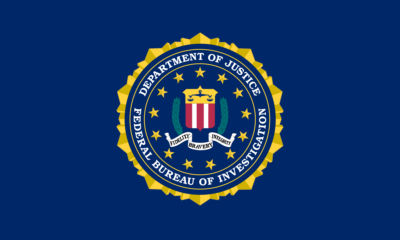News
Russian military to revive Soviet-era tanks in war against Ukraine

The Soviet BMP-1 was one of the first modern infantry fighting vehicles. It was a symbol of strength when it became active in 1966.
Fifty-seven years later, the BMP-1 is obsolete. This has presented a problem for Russia who are short of BMP-2 and BMP-3 vehicles. They now have to utilize the BMP-1.
A recent tally by an open-source-intelligence highlighted the BMP crisis. The Russian army widened its war in Ukraine in February 2022 with 400 active BMP-3s, 2,800 BMP-2s and 600 BMP-1s.
Russia currently has stocks of surplus BMP-1s and BMP-2s—7,200 and 1,400, respectively—but it has zero of the latest BMP-3s in reserve.
The Russian army may have to go old school and bring the BMP-1 3rd-generation tanks out of retirement.
The BMP-1, which is thinly armored, does carry personnel, but it’s not an armored personnel carrier. This is due to it being mechanized warfare, APCs haul troops into battle but don’t actually fight. They’re too lightly armed, too lightly protected.
An infantry fighting vehicle does what is says on the tin, it transports infantry into battle and, unlike an APC, also stays and fights. That requires thicker armor and bigger weapons than you’d find on an APC, which tends to weigh on an IFV’s passenger capacity. A Russian MT-LB APC can pack in 10 or 11 infantry; a BMP-1 IFV squeezes in just eight.
But even that modest troop-capacity meant major design compromises as BMP-inventor Pavel Isakov struggled to balance firepower, protection and payload. For one, the BMP-1 stows ammunition in the passenger compartment. A direct hit can set off the ammo, with obvious negative implications for the infantry sitting right next to the exploding shells.
The BMP-1 has other issues. Its low-velocity 73-millimeter gun is average, Its turret has blind spots: it isn’t able to rotate through 10 o’clock without the gun running into the hull-mounted searchlight.
The tanks biggest problem lies in its steel armor, which is just a quarter-inch thick in some places and can’t even stop heavy machine guns firing armor-piercing rounds. It’s not for no reason that the major driver of the BMP-2 and BMP-3’s developments, respectively in the late 1970s and early ’80s, was protection.
The Russian army in a year has written off around 1,300 BMPs of all models, however a thousand were BMP-2s and BMP-3s with their thicker armor. The Russians could lose even more IFVs in the next year as the older, and much more vulnerable, BMP-1 once again becomes their go-to vehicle for battle.
Terry A. Hurlbut has been a student of politics, philosophy, and science for more than 35 years. He is a graduate of Yale College and has served as a physician-level laboratory administrator in a 250-bed community hospital. He also is a serious student of the Bible, is conversant in its two primary original languages, and has followed the creation-science movement closely since 1993.
-

 Executive3 days ago
Executive3 days agoFBI Raided Secret Service Agent’s Home in Tax Fraud Probe
-

 Christianity Today5 days ago
Christianity Today5 days agoYou Must Know His Voice – Powerful Video
-

 Guest Columns5 days ago
Guest Columns5 days agoBlood on the Sand: Australian Massacre Exposes Hollow Core of Anti-Zionism
-

 Executive5 days ago
Executive5 days agoWaste of the Day: Superintendent Resigns, Nets Over $900K
-

 Civilization4 days ago
Civilization4 days agoWork, Welfare, and the Illusion of a New Eden
-

 Civilization4 days ago
Civilization4 days agoTrump National Security Strategy Mirrors Trump World
-

 Executive3 days ago
Executive3 days agoWaste of the Day: Christmas Arrives in September for Federal Buildings
-

 Civilization2 days ago
Civilization2 days agoHow Illegal Immigration and Government Failure Fuel Identity Theft


